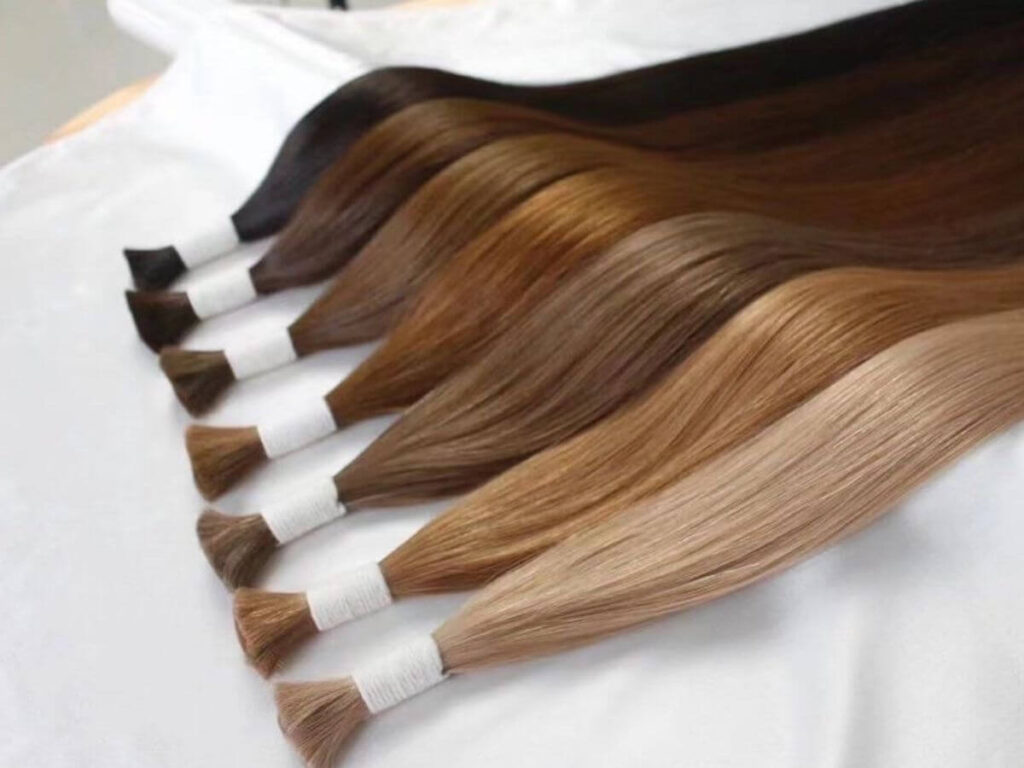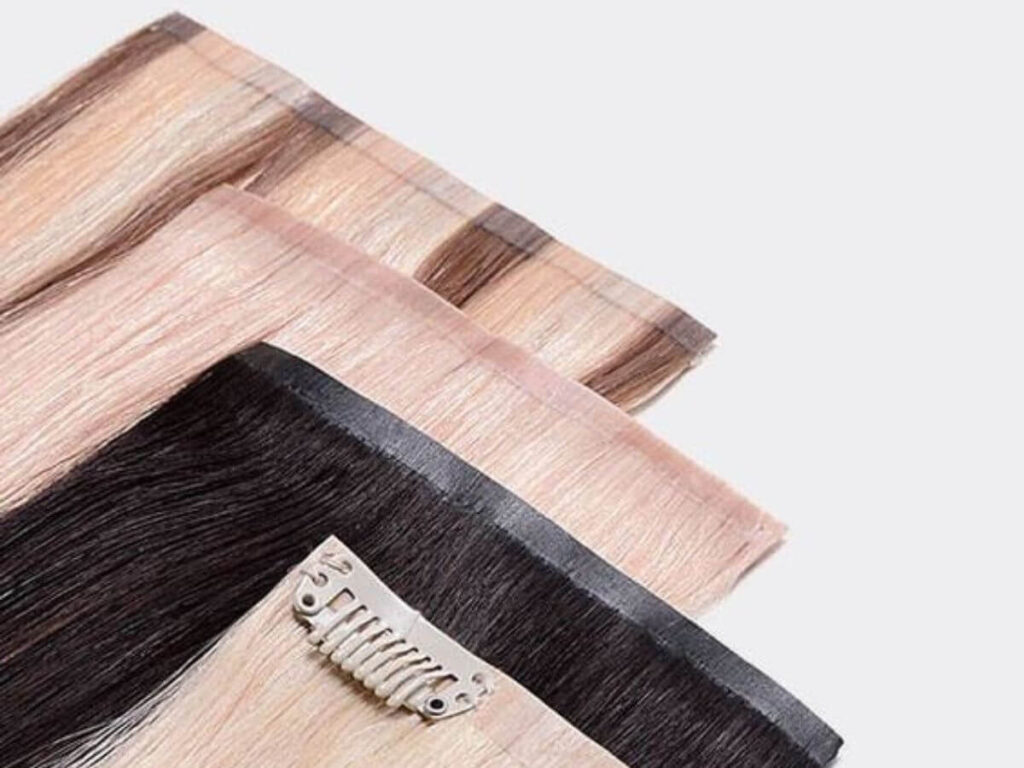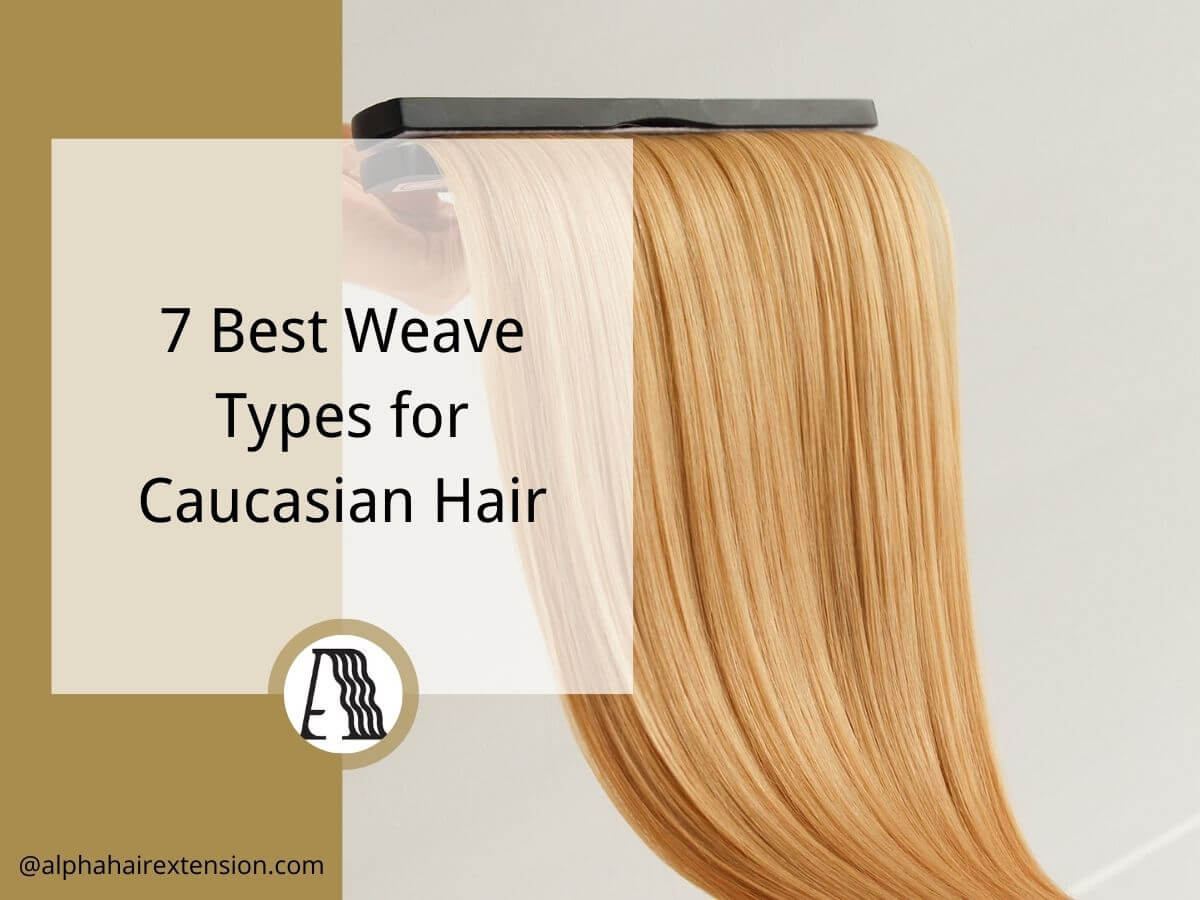I still remember my first order of hair extensions. The packaging was wrong, the supplier took weeks to respond, and I had no idea how to fix the problem.
That’s when I realized—starting a hair business is more than just selling products.
If you’re thinking about launching your own brand, you need the right information to avoid costly mistakes.
This guide is based on real industry knowledge, not just theory. Whether you’re opening a salon or an e-commerce store, you’ll get practical steps that work.
By the end of this article, you’ll know how to find suppliers, price your products, and build a brand customers trust. Every step is broken down clearly, so you can move forward with confidence.
So, let’s get started!
Step#1 Research the Hair Industry
Let me be real with you—jumping into the hair industry without research is like driving blindfolded. You wouldn’t do that, right? So why risk your time and money on guesswork?
The hair business is massive, but not all opportunities are created equal. Some niches are oversaturated, while others are hidden gold mines waiting to be tapped. Your job? Find out where your business fits in this industry.
Identify the Trend
The hair industry isn’t static—it moves fast. Trends shift, new products emerge, and consumer expectations evolve. You need to stay ahead.
- Are raw, unprocessed hair bundles in demand?
- Is HD lace the next big thing?
- Are salons and hairstylists your best clients, or should you target wholesale buyers?
You don’t need to guess. Data is your best friend. Dive into market reports, competitor analysis, and customer reviews. Follow industry leaders, attend trade shows, and join supplier networks. The more you know, the better decisions you’ll make.
Find the Gaps and Opportunities
Here’s the truth—there’s always room for a new player in the hair industry. But the winners aren’t just selling hair. They’re solving problems.
- Are customers frustrated with inconsistent hair quality?
- Are there gaps in shipping times or customer service?
- Are salons struggling to find reliable bulk suppliers?
Find these pain points, and position your business as the solution.

Step#2 Choose Your Niche
Here’s the truth—not all hair businesses are created equal. Some brands explode with success, while others fade into the background. The difference? Niche selection.
Choosing the right niche isn’t just about selling hair. It’s about owning a space in the industry where your business stands out. You need to know exactly who you serve, what they need, and why they should choose you over anyone else.
Find Your Spot
Let’s be real—you can’t sell to everyone. The more specific you are, the easier it is to attract the right buyers.
Ask yourself:
- Do you want to focus on luxury, high-end virgin hair for premium buyers?
- Are you targeting salons and hairstylists who need wholesale bundles?
- Is your audience looking for affordable synthetic wigs for everyday wear?
- Do you want to specialize in custom lace wigs for clients with hair loss?
Your niche defines everything; your branding, pricing, marketing, and even your suppliers.
Know Your Strengths
When I first started, I thought I could sell everything—bundles, wigs, edge control, hot tools—you name it. Big mistake. Trying to dilute my brand. Then, I zeroed in on high-quality raw hair extensions and became known for reliability and consistency. That focus helped me attract serious buyers and build long-term relationships.
The lesson? Pick a niche that aligns with your strengths and the market’s needs. Your niche should have demand—but not too much competition. If everyone is selling the same thing, standing out will be tough.
- Look at competitors’ weaknesses. Are they struggling with customer service? Shipping delays? Lack of variety? Find a gap and fill it.
- Read customer reviews. People are always talking about what they wish they had. That’s where your business can step in.
- See where demand is growing. TikTok, Instagram, and industry blogs reveal rising trends before they go mainstream

Step#3 Create a Business Plan
Now that you’ve nailed down your niche, it’s time to turn your vision into a solid plan. Knowing what you want to sell is one thing—building a business that actually makes money is another. That’s where a business plan comes in.
Define Your Business Model
Every successful hair business has a clear structure. Ask yourself:
- Will you sell directly to salons and hairstylists (B2B) or focus on individual buyers (B2C)?
- Are you going for an online-only model, or will you also have a physical storefront?
- Will you hold inventory or use a dropshipping model?
Your answers will shape how you set up operations, manage costs, and approach marketing.
Set Clear Financial Goals
Let’s be honest—starting a hair business isn’t cheap. Between inventory, branding, and marketing, the costs add up fast. A business plan forces you to break down your finances so you’re not just guessing.
- Startup Costs: What do you need to launch? (Think inventory, website, packaging, and licenses.)
- Pricing Strategy: Are you positioning your brand as affordable or luxurious? Make sure your prices match your brand.
- Revenue Projections: How much do you expect to make in the first 6 months? A year? Be realistic, but ambitious.
Understand Your Target Market
Since you’ve already chosen your niche, now you need to dive deeper into your ideal customer.
- Who are they? (Salon owners? Boutique wig shoppers? Social media influencers?)
- What are their biggest pain points? (Struggling to find high-quality hair? Frustrated with inconsistent suppliers?)
- Where do they shop? (Online, at beauty supply stores, through referrals?)
When you understand exactly who you’re serving, your marketing, branding, and sales approach will be laser-focused.
Outline Your Marketing Strategy
A great product means nothing if no one knows about it. How will you get your business in front of the right people?
- Social Media Marketing: Platforms like Instagram, TikTok, and Pinterest are goldmines for the hair industry.
- Influencer Collaborations: Partnering with stylists and beauty influencers can give you instant credibility.
- SEO & Content Marketing: A blog, YouTube channel, or tutorials can help establish your brand as an industry expert.
- Paid Ads: Facebook and Google Ads can help you scale faster if you have a budget.

Step#4 Register Your Business
Now that your business plan is in place, it’s time to make it official. This is the step where your idea transforms from a concept into a legally recognized business.
Skipping this part? Not an option. A registered business protects you from legal trouble, builds credibility, and allows you to work with suppliers, banks, and wholesale partners without limitations.
Choose a Business Structure
The way you register your business depends on how you want to operate and grow. Here are the most common options:
- Sole Proprietorship: Simple and inexpensive, but it doesn’t protect your personal assets.
- Limited Liability Company (LLC): Offers legal protection, tax benefits, and is a smart choice for most small businesses.
- Corporation (S-Corp or C-Corp): Best for businesses planning to scale big, bring in investors, or hire employees.
Register Your Business Name
Your business name is your brand identity, and it needs to be legally yours. Here’s how:
- Check for Availability: Make sure no one else is using your name by searching your state’s business registry and the U.S. Patent and Trademark Office.
- Register It With Your State: If you’re an LLC or corporation, this happens during the formation process.
- Secure Your Domain Name: If your business name is available as a website URL, grab it ASAP. Your online presence matters.
Get Your EIN (Employer Identification Number)
Think of an EIN as a Social Security Number for your business. Even if you don’t plan on hiring employees yet, you’ll need an EIN to:
- Open a Business Bank Account: Keep your finances separate and professional.
- File Taxes: Required for tax reporting and compliance.
- Work With Wholesale Suppliers: Many suppliers require an EIN before doing business.
- Build Business Credit: Essential for securing future loans or funding.
The good news? It’s free and easy to get from the IRS website in minutes.
Step#5 Find a Reliable Supplier
Now that your business is officially registered, it’s time to secure the most important part of your operations—a reliable supplier. Your supplier determines the quality of your products, your reputation, and ultimately, your success.
A bad supplier? That’s a fast track to losing customers, damaging your brand, and wasting money. But a great supplier? They can help you scale, stay competitive, and keep customers coming back for more.
What to Look For
Not all hair suppliers are created equal. You need more than just “good hair”—you need consistency, transparency, and reliability. Here’s what to consider:
- Hair Quality: Is it raw, virgin, Remy, or synthetic? Test samples before making bulk purchases.
- Authenticity: Many suppliers claim to sell virgin or raw hair, but some mix in synthetic fibers. Verify their claims.
- Pricing & MOQ (Minimum Order Quantity): Can you afford their prices? Do they require large orders upfront?
- Shipping Time & Reliability: Delays cost money. Choose a supplier that delivers on time, every time.
- Customer Support & Communication: If issues arise, will they respond quickly? Do they offer refunds or replacements?
Where to Find Suppliers
Finding the right supplier takes time and research. Don’t rush this step—you’ll thank yourself later.
- Wholesale Marketplaces: Platforms like Alibaba, AliExpress, and IndiaMart offer global supplier options.
- Industry Trade Shows: Events like Bronner Bros, Cosmoprof, and local beauty expos connect you with verified vendors.
- Direct Manufacturer Websites: Many high-quality suppliers have their own sites—skip the middleman and buy direct.
- Referrals & Reviews: Network with other business owners in the hair industry and ask for recommendations.

Step#6 Build Your Brand Identity
Now that you’ve secured a reliable supplier, it’s time to focus on something just as important—your brand identity.
Here’s the truth: People don’t just buy hair. They buy from brands they trust, admire, and connect with. If your business looks like every other hair vendor out there, you’ll blend in—and that’s the last thing you want.
Brand’s Personality
Before you jump into designing logos and websites, ask yourself:
- What do I want my brand to be known for? (Luxury? Affordability? Exclusivity?)
- Who is my ideal customer? (Salon owners? Beauty influencers? Wholesale buyers?)
- How do I want customers to feel when they buy from me? (Confident? Empowered? VIP?)
Your answers shape everything, from your visuals to your messaging.
Create a Business Name & Logo
Your business name is the first impression. Make it:
- Memorable (Avoid generic names like “Luxury Hair Bundles”)
- Relevant (It should reflect your brand’s vibe)
- Easy to Spell & Search (No complicated spellings that customers might forget)
Once you’ve locked in your name, invest in a professional logo. This will be used everywhere, your website, packaging, social media, and promotional materials. Make it clean, modern, and unique.
Craft a Strong Brand Message
Your brand story and messaging are what make people feel connected to your business. Your audience should know:
- Why you started this business (e.g., “I struggled to find quality hair and wanted to bring a better solution to the market.”)
- What makes your brand different (Better quality, personalized service, exclusive collections, etc.)
- How your products improve their lives (Do they help salons increase their revenue? Do they empower women with hair loss?)

Step#7 Develop a Marketing Strategy
Now that your brand identity is solid, it’s time to get it in front of the right people. Because let’s be real—having high-quality hair products and a beautiful brand means nothing if no one knows you exist.
Marketing isn’t just about posting on Instagram and hoping for sales. It’s about creating a strategy that attracts, engages, and converts your target audience into loyal customers.
Leverage Social Media Marketing
Social media is the heartbeat of the hair industry. If you’re not using platforms like Instagram, TikTok, and Pinterest, you’re missing out on thousands of potential buyers.
- Instagram & TikTok: Create high-quality videos showing hair textures, styling tutorials, and transformations.
- Pinterest: Upload stunning product photos with links to your website.
- Facebook Groups & Forums: Engage with potential customers in beauty and hairstylist communities.
Use Influencer & Brand Partnerships
Influencers and hairstylists already have your ideal customers watching them. Partnering with them can give your brand instant credibility and visibility.
- Micro-Influencers (5k-50k followers) have high engagement and are more affordable.
- Hairstylists & Salon Owners can showcase your products in real-world applications.
- Brand Collaborations with beauty brands (edge control, styling tools) can expand your reach.
When done right, influencer marketing can skyrocket your sales overnight.
Invest in Paid Advertising
Organic reach is great, but if you want faster results, paid ads are a game-changer.
- Facebook & Instagram Ads: Target specific audiences based on age, interests, and behaviors.
- Google Ads: Capture people searching for hair extensions, wigs, and beauty products.
- TikTok Ads: Leverage short-form video content to reach younger audiences.
Start small, track results, and scale what works.
Build an Email & SMS List
Social media platforms can disappear overnight, but an email/SMS list is yours forever.
- Offer a Discount or Free Guide (e.g., “10% off your first order” or “The Ultimate Hair Care Guide”) to collect emails.
- Send Weekly Emails with styling tips, product launches, and special offers.
- Use SMS Marketing for exclusive promotions and reminders.
An engaged email/SMS list means consistent sales without relying on social media.

Step#8 Launch Your Business
You’ve done the research, built your brand, and created a marketing strategy—now it’s time for the moment that matters most: launching your business.
A strong launch isn’t just about going live. It’s about building hype, creating demand, and making sure your first customers have an unforgettable experience.
- Create a Pre-Launch Buzz: Start talking about your business weeks before your launch. Share behind-the-scenes content, product previews, and countdowns to build excitement.
- Offer a Special Promotion for Early Buyers: Give your first customers a discount or a special deal to encourage them to make a purchase. This helps you gain traction and collect reviews early on.
- Engage With Your Audience: Be active on social media, answer questions, and interact with potential customers. When people feel connected to your brand, they are more likely to buy from you.
- Announce Your Launch Through Multiple Channels: Don’t rely on just one platform. Use email, social media, influencers, and even paid ads to spread the word about your launch.

Step#9 Focus on Growth and Expansion
You’ve successfully launched your business—but this is just the beginning. Now, it’s time to scale, expand, and turn your hair business into an industry leader.
Growth isn’t about doing more—it’s about doing what works, better and bigger. Let’s break down the key strategies to take your business to the next level.
Analyze & Optimize What’s Working
Before adding new products or expanding, look at what’s already bringing in the most sales.
- Which products are selling the most? Focus on increasing stocks and promoting them more.
- Where are your best customers coming from? Double down on that marketing channel.
- What feedback are you getting? Use customer reviews to refine your products and service.
Scaling isn’t about guessing—it’s about using data to make smart moves.
Expand Your Product Line
Your customers love your products—now, give them more of what they want.
- Offer complementary products (edge control, styling tools, satin bonnets).
- Introduce new textures or colors based on customer demand.
- Bundle your bestsellers to increase the average order value.
Don’t expand too fast—grow in a way that feels natural to your brand.

Conclusion
Starting a hair business isn’t just about selling products—it’s about building something meaningful. From researching the industry to scaling for growth, you now have a clear roadmap to success.
The only thing left? Taking action.
I remember how overwhelming it felt in the beginning, but every step forward brought me closer to my dream. Your dream is waiting too—so go for it.
Are you ready to launch your business and make your mark? Let’s talk.
Contact us today and let’s bring your vision to life!
Explore More Helpful Resources
If you’re looking for more insights, we’ve put together a list of helpful articles that you might enjoy:
Still haven’t found what you’re looking for? Don’t hesitate to contact us. We’re available around the clock to assist you.







